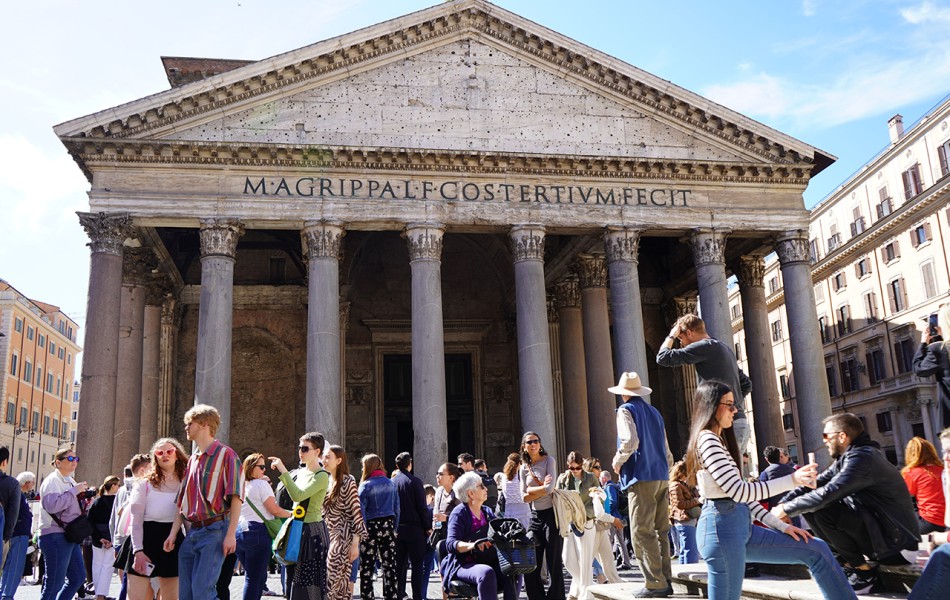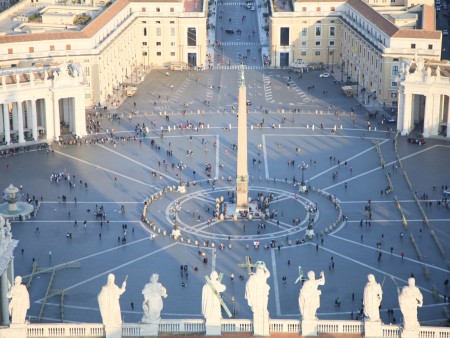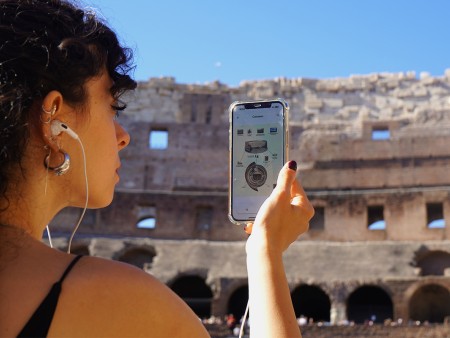Accessible Rome: Transportation, Colosseum, Ancient City, and City Center
The most iconic and accessible places in the Eternal City for seniors with limited mobility and wheelchair users

24 April 2024
Rome Travel GuideRome, the city of millennial wonders, rises majestically among its seven hills, capturing the imagination of visitors from every corner of the globe. With its streets paved with history, its iconic monuments and its vibrant culture, the Eternal City has always been synonymous with a rich heritage and timeless beauty.
However, Rome is not yet a fully accessible city, despite the many necessary adaptations that have been made in recent years to make most of the historic center, major museums and some archaeological parks accessible to disabled people.
Some squares and alleys in the city center, precisely because are paved with the ancient Roman paving stones, could make it difficult for wheelchairs of the disabled or seniors to move easily, therefore it is good to be aware of these possible obstacles when planning your visit.
The same goes for the architectural barriers present in some museums, which require the right attention to be addressed in advance, perhaps with the use of special lifts, operated on request by the museum staff. Even public and private transport still presents some difficulties.
The choice of a Rome tour for seniors also with limited mobility could be the best way to explore the beauty of the city, thanks to an expert tour guide who will allow you, safely, to venture among the main accessible attractions of the capitol of Italy.
Accessible transportation in Rome
As mentioned, difficulties persist with the use of transportation in the capital, especially public transportation. Travel in Rome, which is not always easy due to its extensive area, requires infrastructure and transportation adapted to the needs of wheelcair users.
As far as public transportation is concerned, the vast majority of the bus fleet is equipped with a fold-down platform and dedicated space to facilitate access and travel for wheelchair users, as are 70 percent of streetcars.
Most metro stops are also designed to be accessible, with the exception of the Spagna, Barberini, Repubblica, Vittorio Emanuele, and San Giovanni stations on Line A, where elevators or stair lifts are lacking.
Most cabs operating in the capital do not have services for wheelchair users. However, there are several cooperatives that offer cabs equipped with a platform and a lift system. Private transportation also includes Uber, which, via an app, allows passengers to select accessible vehicles.
The magical atmosphere of Rome's historic center for disabled
To fully immerse yourself in the soul of this ancient city, you must pass by the streets of Rome without the aid of public transportation, so as to discover its hidden treasures and absorb the vibrant atmosphere of Roman life. Despite the presence of ancient streets and staircases, the city has made a commitment to making its attractions accessible to everyone, with innovative solutions and suitable infrastructures. Here is a list of the main attractions in Rome that can be easily explored by people with disabilities, ensuring an inclusive and memorable experience for all visitors.
Piazza del Popolo
Located in the heart of Rome, Piazza del Popolo is one of the most famous squares in the city, and is easily accessible by wheelchair Characterized by an elliptical shape and three churches, Santa Maria del Popolo, Santa Maria in Montesanto and Santa Maria dei Miracoli, the square is dominated by an Egyptian obelisk in the center and has a history dating back to ancient Rome. Today it is an important meeting point and tourist destination, without architectural barriers to hinder the route.
Spanish Steps
Continuing along Via Del Corso, which is also accessible as it is free of cobblestones, you can easily reach Spanish Steps, its majestic staircase and the Barcaccia Fountain, a famous Baroque fountain built by Gian Lorenzo and Pietro Bernini. In this square there are accessible toilets, equipped with a lift, suitable for people with disabilities.
Trevi Fountain
The most important challenges to face in this case are the paving, made entirely of cobblestones, and the large crowd of people that lines the fountain. Despite this, the Trevi Fountain can be visited without any impediments of any kind, allowing anyone to throw their coin in the hope that magic will happen.
Piazza Navona
It is one of the most iconic squares in Rome and is generally accessible to people with disabilities. The square is known for its three splendid fountains: the Fountain of the Four Rivers in the center, by Gian Lorenzo Bernini, the Fountain of the Moor and the Fountain of Neptune. Surrounded by Baroque buildings, cafes and street artists, Piazza Navona is extremely spacious and largely flat, making it a pleasant discovery.
Campo de’ Fiori
Another historic square located in the center of Rome is Campo de’ Fiori. Known for its neighborhood market and the statue of Giordano Bruno, the square is a magical and characteristic place in the Eternal City and is easily accessible by wheelchairs users.
Piazza Venezia
This square is an important traffic junction and a reference point for tourists and citizens. The square is easily accessible from all directions, thanks to the presence of well-marked sidewalks and pedestrian crossings. From all sides of Piazza Venezia it will be possible to admire the monument to Vittorio Emanuele II, also known as the "Altare della Patria", which consists of an imposing white marble complex dedicated to the first king of Italy.
It's possible to explore the most important squares and fountains of the capital, with the assistance of expert guides, by booking an accessible tour of Rome's historic center.
Colosseum
The great Archaeological Park of the Colosseum is the heart of the ancient city and also includes the Roman Forum and the Palatine Hill. In recent years, the Colosseum Archaeological Park has made great strides in making this site accessible to everyone. All its entrances are accessible to people with disabilities and lifts and stairlifts are available. In addition, staff are present at the entrance to provide assistance. Inside the Colosseum, a well-marked route allows all visitors to fully experience a large portion of the 1st order, offering a suggestive view of the arena and the steps, and, thanks to the presence of dedicated lifts, even visitors with mobility impairments can reach and enjoy the entire surface of the 2nd order. From here you can admire a breathtaking panoramic view of the interior of the Colosseum and the Roman Forum. The Belvedere is still inaccessible.
Roman Forum and Palatine Hill
In order to make the Roman Forum accessible to everyone, a new route has been inaugurated, allowing visitors to easily reach the main monuments of the archaeological site. Reaching the top of the Palatine, although not particularly difficult, still presents some limitations in short sections, which are being modernized to make them fully accessible.
Pantheon
This ancient Roman temple dedicated to all the gods is famous for its imposing concrete dome, the largest in the world at the time of its construction, and for the oculus, a circular opening in the ceiling that illuminates the interior. The entrance to the site is accessible thanks to a ramp that leads inside the temple, eliminating the need to climb steps. Inside, the space is large and free of architectural barriers.
The accessibility of Rome's monuments represents a major challenge, but also an opportunity to make the city more inclusive and welcoming to all its visitors. While some historic attractions may present architectural barriers, many initiatives and projects are underway to improve accessibility make the rich cultural heritage of the Eternal City fully usable for everyone. It is essential, therefore, to plan your itinerary in advance.
Our categories:
You may also be interested ...

Vatican Private Tour with Sistine Chapel & St. Peter's Basilica: Renaissance’s Wonders
Private tour
Discover with a skip the line Private Vatican Tour the Sistine Chapel, Vatican Museums and St Peter’s Basilica
starting from: € 275

Colosseum Guided Audio Tour with Roman Forum and Palatine Hill
Private tour
Discover Ancient Rome’s secrets and history with our immersive Colosseum guided audio tour, rich in image and content
starting from: € 51 € 42